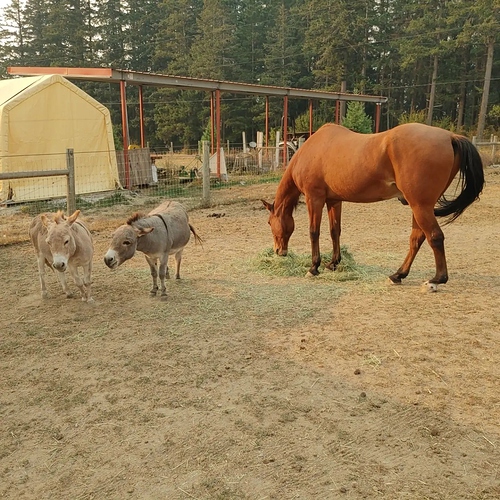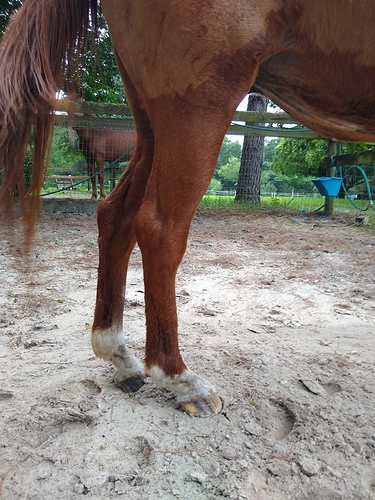My 28 yo has DSLD, and has for… a while. He has been retired since about errr… 2015, and that was mostly for some ringbone. Depending on how fast it goes and how you manage it, it isn’t something that comes on suddenly and just overwhelms them, though it’s possible it wasn’t noticed for a long time. Shoes are contraindicated as far as I know. He also has Cushings and is treated for it, and daily equioxx helps with the ringbone and DSLD. One pastern is noticeably puffier than the other, but he’s allowed to move at his own pace and does what he wants, and still bosses around everyone. He is not kept stalled.
2009

2010
2020

2022




 The farrier said barefoot was better, and the vet said it didnt help and holding up the leg for shoes (trims already require equioxx + bute) wouldnt be kind.
The farrier said barefoot was better, and the vet said it didnt help and holding up the leg for shoes (trims already require equioxx + bute) wouldnt be kind.